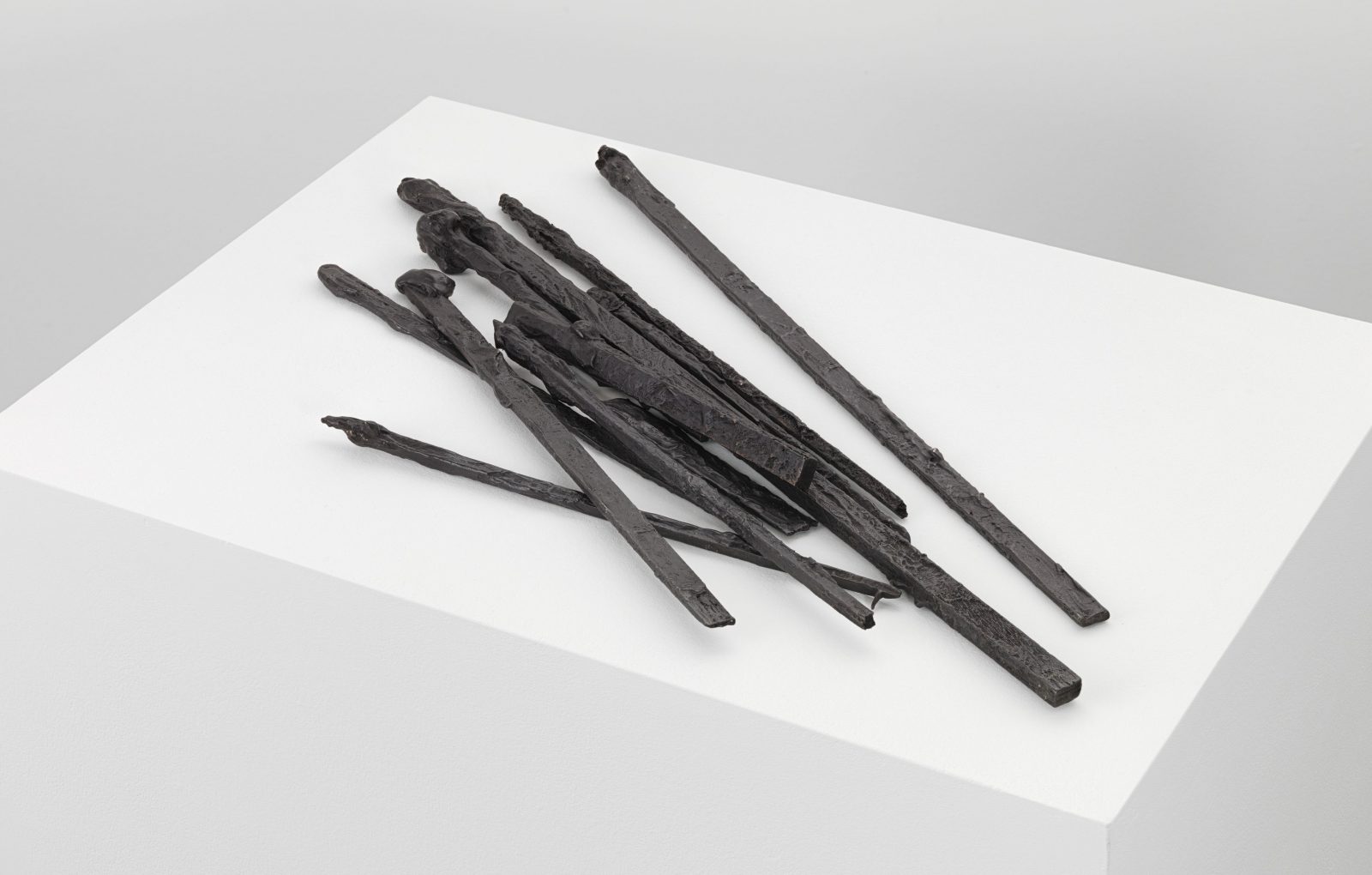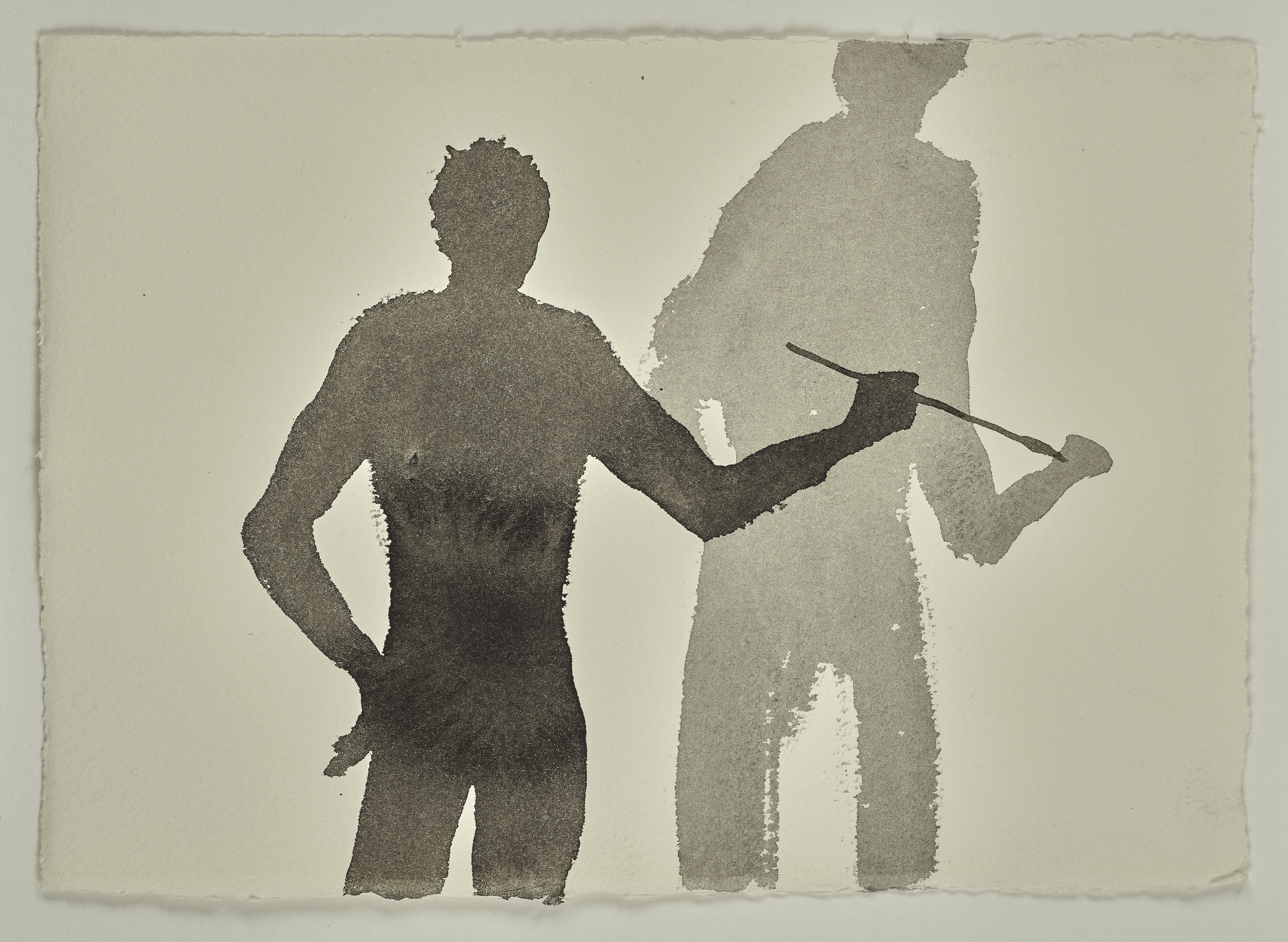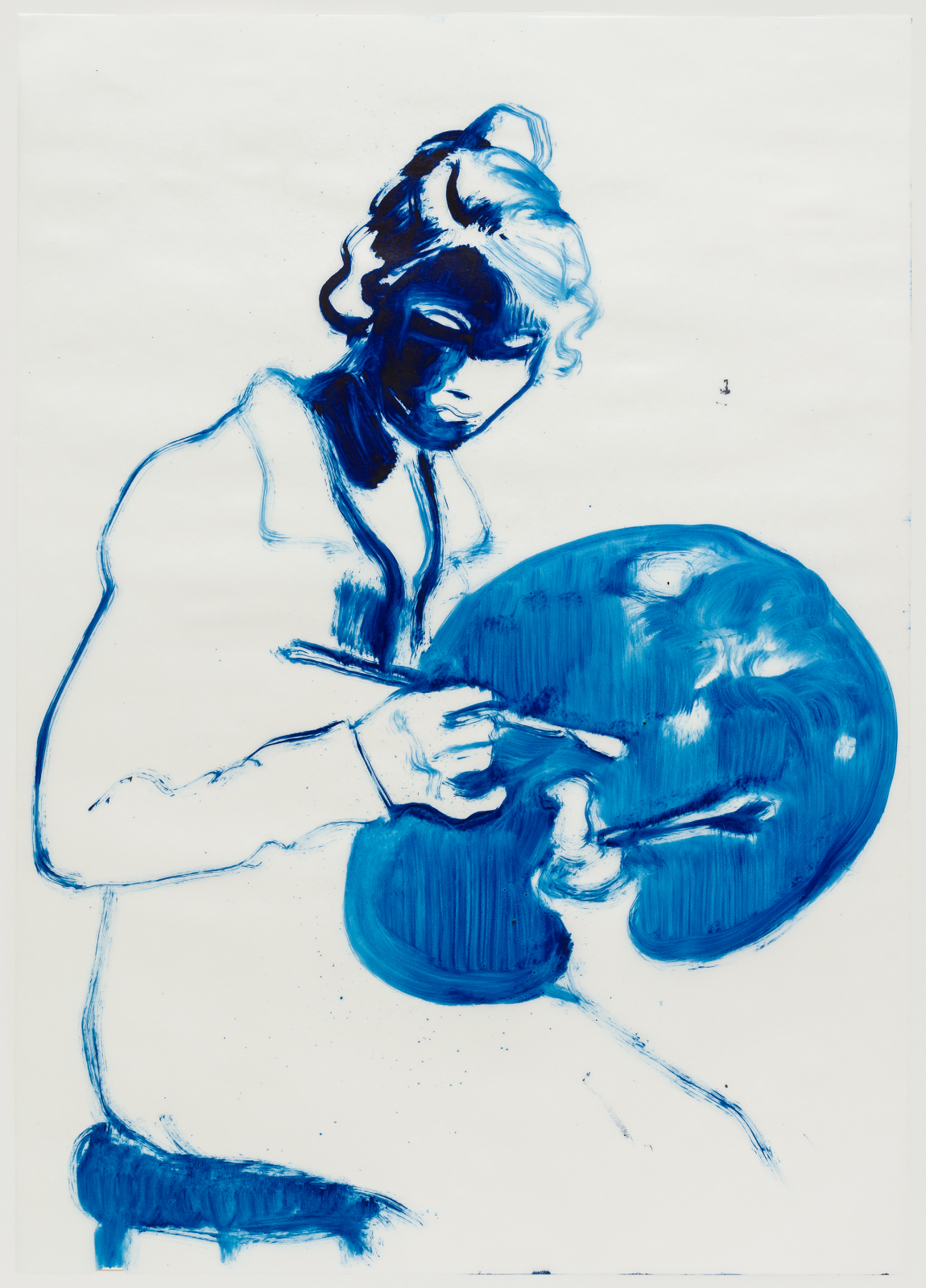A celebration of artists’ studios
Less than two weeks remain to experience one of the most engaging exhibitions in London this Spring: A Century of the Artist’s Studio: 1920-2020 at Whitechapel Gallery. Curated by the Whitechapel’s Director Iwona Blazwick and her team, this extensive show features loans from public institutions and private lenders, including a carefully selected group from the Katrin Bellinger Collection comprising drawings, photographs, and a sculpture – Phyllida Barlow’s bronze cast of her paint brushes that she painted and prepared paint with (fig. 1).
Each visit to A Century of the Artist’s Studio is bound to be unique and that is part of the appeal of this rich exhibition. How long will you spend watching Paul McCarthy’s film Painter (1995), a visceral performance on the tribulations of the artist? Will you be drawn to Andy Warhol’s crowded and foil coated ‘Silver Factory’ or search for inner peace amongst the painted studio interiors of Wilhelmina Barns-Graham and Paul Winstanley? Some works might be familiar, like Martha Rosler’s seminal film Semiotics of the Kitchen (1975), but most will be new discoveries for many. One of the show’s revelations for me was self-taught artist Maud Lewis (1901-1970) who transformed her humble shack in Nova Scotia with joyful nature-inspired decorations, wonderfully naïve and personal.
The rooms are constellated with works that will stimulate visitors to think about the significance of the studio as a ‘space of one’s own’ for both male and female makers. Another loan from the Katrin Bellinger Collection and one of the first exhibits to greet visitors even before they cross the glass doors to the gallery is Antony Gormley’s drawing of a man painting his own shadow, titled The Origin of Drawing VIII (fig. 2). An open appropriation of the story from Pliny the Elder explaining that painting was born when a woman outlined the shadow of her departing lover on the wall (so as to preserve his image), its presence here invites reflection on gender stereotypes around the myth of the artist. On the same wall hang two works by Lisa Brice whose representations of women in the studio challenge the assumption that the artist is always male (fig. 3).
The dialectic between different approaches to the spaces where art is made continues in the studio corners, informative and evocative thanks to the right balance of objects and traces of the artist’s creative process. I particularly enjoyed the Henri Matisse corner, with the African kuba textiles that he bought in antique shops or on his travels, and that served as both decorations and props. The studio of Kim Lim (1936-1997) also reflected her travels. In the show, her minimalist maquettes are set against the backdrop of her studio wall where she pinned photographs alongside found objects and tools. Working from a studio in her home Kim combined her career as sculptor and printmaker with family life – an arrangement that will resonate with many.

Fig. 1 Phyllida Barlow, untitled: paintsticks; 2017, 2017, 11 bronze sticks, maximum length 86 cm, Katrin Bellinger Collection, inv. no. 2017-043

Fig. 2 Antony Gormley, The Origin of Drawing VIII, 2008, carbon and casein, 190 x 273 mm, Katrin Bellinger Collection, inv. no. 2018-054

Fig. 3 Lisa Brice, Untitled, 2019, oil on trace, 419 x 296 mm, Katrin Bellinger Collection, inv. no. 2019-063